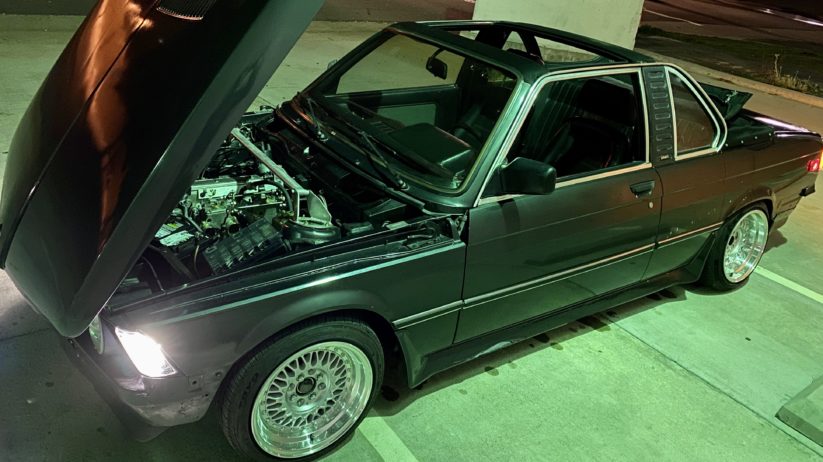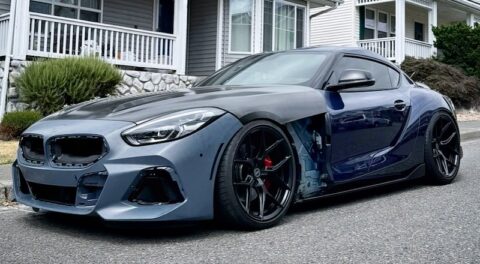As some of you may know, I’m a drop-top fiend. Or, if I want to flatter myself, I’ll say I’m an ardent promoter of the top-down lifestyle. I’m a firm believer that a cruise with the top down is one of the best ways to de-stress, and my own ZHP proves that to be true time and time again.
The existence of my own convertible, however, has its great-grandfather to thank for its no-roof DNA.
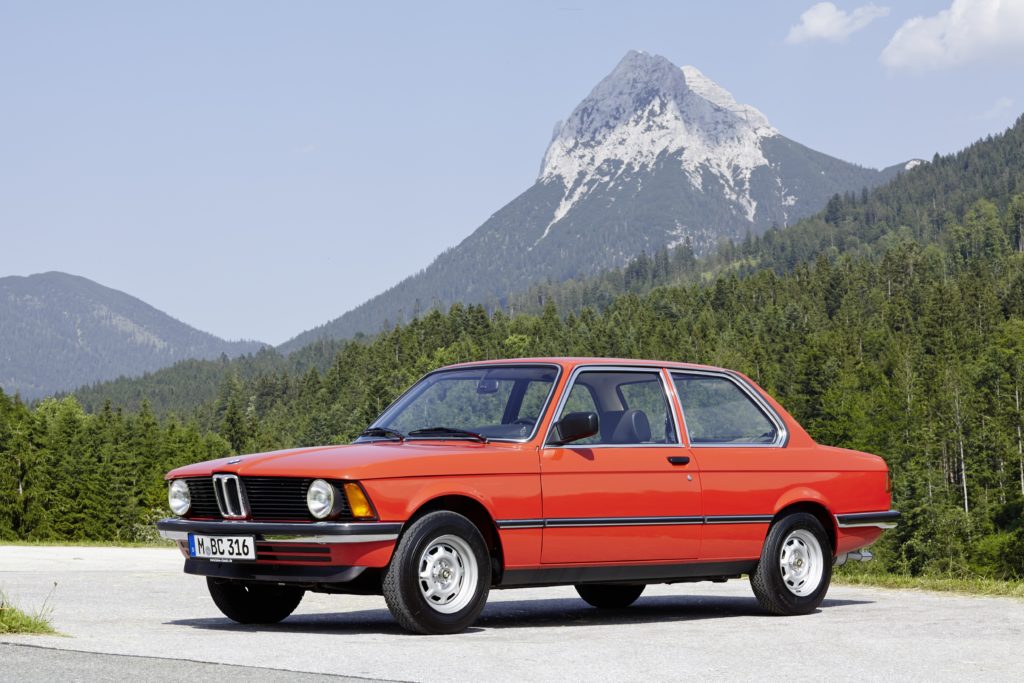
The Euro-Spec E21 coupe.
The E21 3 Series should be a household name for BMW enthusiasts by now. As the first official generation of BMW’s flagship 3 Series, the E21 has been capturing the imaginations of Bimmer aficionados since 1975. BMW’s director of design at the time, Paul Bracq, executed his revolutionary design for the E21 for the first time in the early ’70s; for some, it was a dazzling display of artistry that percolated athleticism, and reflected the sporting performance of the 3 Series of the time. For others, the distinctive rear end with its creased bodyline and black heckblende wasn’t exactly attractive—but it certainly was fresh, polarizing, and one of a kind.
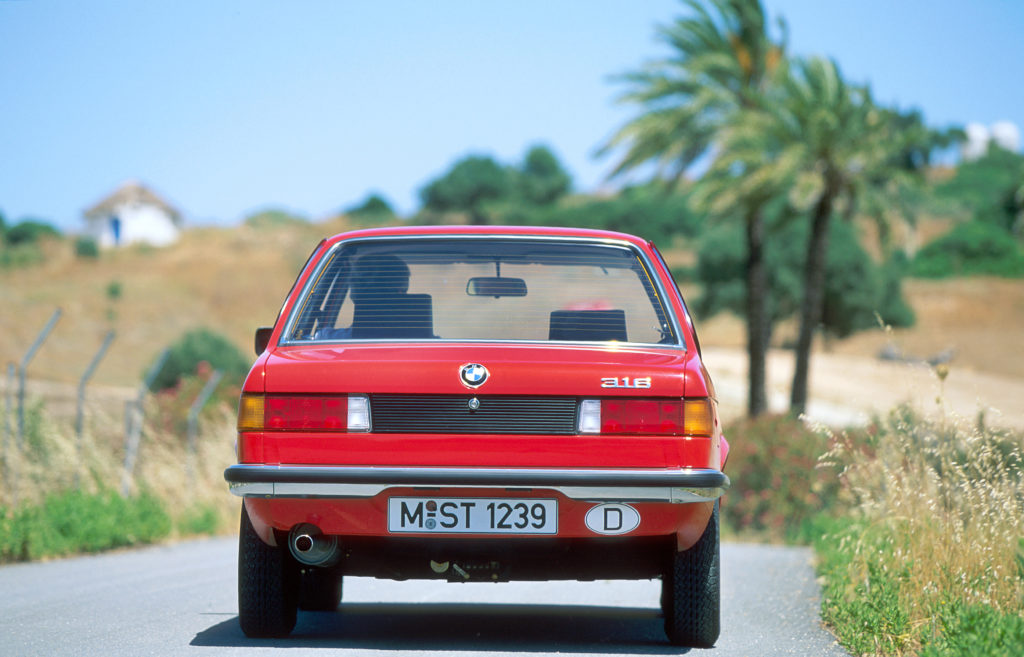
The E21’s squished rear profile often divides enthusiasts when it comes to opinions on its appearance. For some, the heckblende, or space between the taillights, is an eyesore. For others, it’s a design staple, and you can buy a similar piece for the succeeding E30.
For two years, the only configuration available was a coupe, until Stuttgart-based coachbuilder Baur received their first patent for a folding roof design. Baur’s well-established status as a luxury coach-builder had first piqued BMW’s interest in 1937, when an ambitious collaboration ended in the birth of the 320 cabriolet. The relationship between the two companies only continued to blossom over the years leading up to the 3 Series’ debut; the release of the new patent came through around the same time BMW was looking to experiment with the 1971 2002, which led to a few different 2002 cabriolet models, and eventually the E21 Baur TC1.
The TC, or ‘Topcabriolet’ was Baur’s way of branding their 3 Series coupe-converted cabriolet invention, without calling it a full-blown convertible or using the already patented (by Porsche) Targa name. Having worked with the Bavarian automaker and the 2002 cabrio model, Baur knew that they had to replace the stability lost in the top with a newfound source of strength. Implementation of an independent targa top and fixed-frame retractable soft-top system allowed the E21 TC to benefit not only from Baur’s world-class build quality, but also a high degree of reinforced rigidity, giving an edge to performance and safety.
While we’re used to seeing full-blown, highly-automated convertible BMWs on the road today, the E21 Baur TC’s production numbers weren’t as numerous. Over the course of the four years spanning 1977 through 1981, Baur converted only 4,595 E21 coupes into the TC configuration—a conversion that spanned all models in the lineup, from the economy-conscious, carbureted, inline-four-motivated 315 to the rowdy, Bosch-K-Jetronic injected, inline-six-powered 323i.
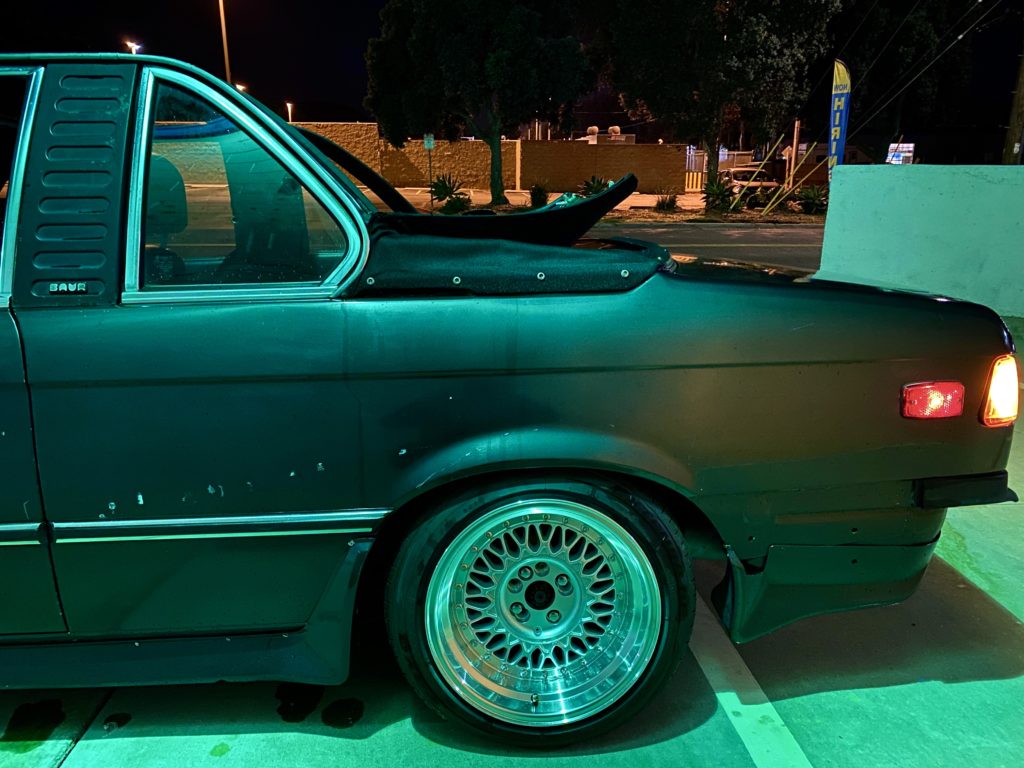
While this Baur will be getting a full restoration soon, it deserved a nice bath first.
While official numbers were never explicitly recorded, enthusiasts were quick to create online registries for their funky drop-tops. In North America, the Baur was only available in two models: the 320i and the 320is. First equipped with a two-liter M10, the 320i switched to using the downsized M10B18 with 101 horsepower and the same Bosch K-Jetronic fuel injection for the 1980 model year. While 1976 and newer models came with arguably the best transmission option, a five-speed Getrag manual with overdrive, the American-spec Baur could also have been optioned with a three-speed ZF automatic or five-speed manual, sans close-ratio gearing.
Perhaps the biggest (and most intrusive) modification to the U.S.-spec Baurs, however, was the “diving-board” front and rear bumpers, an ungodly sight that most owners chose to delete upon purchase—and I certainly don’t blame them for doing so.
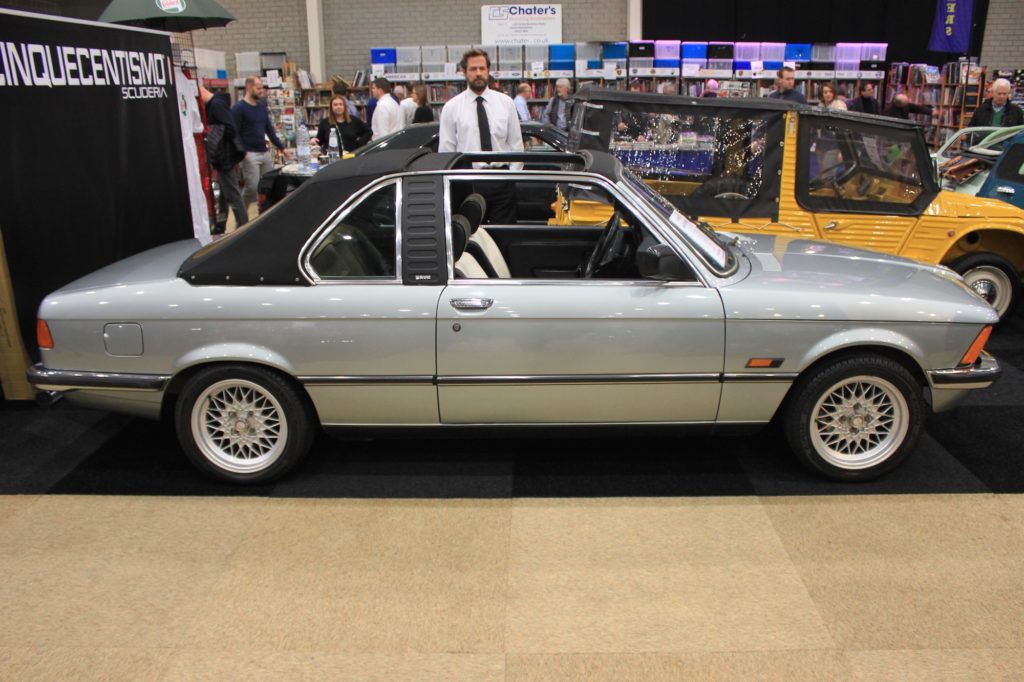
The E21 Baur TC, in 320 form.
The Baur 320is was the more refined, more athletic sibling of the 320i. Exclusive to the American market, the S-package E21 Baur TC debuted in 1981 and was marketed as a well-equipped performance model for the spirited driver. The S added a limited-slip differential, Recaro sport seats, revised sport suspension, BBS wheels, and fog lights, among other goodies—identical to a regular E21 320is, but with the Baur top. If you’re looking to get behind the wheel of one of these peppy machines, however, you’ll have to do some serious digging in the classifieds. The non-Baur variant has a production estimate of only 2,500 models worldwide—making the Baur 320is one radically rare gem.
Baur’s relationship with BMW continued up through the E30 and E36, but they weren’t sold in the U.S. after the E21, since the E30 could be had from the factory as a full cabriolet.
Even if you get your hands on a nice specimen, don’t expect to fall in love right away—the E21 Baur TC isn’t exactly the easiest to love. Its very existence makes it somewhat of a pariah; it isn’t quite a coupe, and it really isn’t a proper convertible. This innate identity crisis is one of the many reasons why the E21 Baur has been stuck in such in something of a purgatory for so long. But if you open up your heart to the idea of owning the so-called ugly-duckling, you’ll quickly learn that the Baur’s offbeat appearance is in fact the very thing that makes it so distinguished, and so lovable.
If you’re still on the fence, strike up a discussion with a Baur owner in person or on the online forums—they’ll be quick to show you what you’re missing.
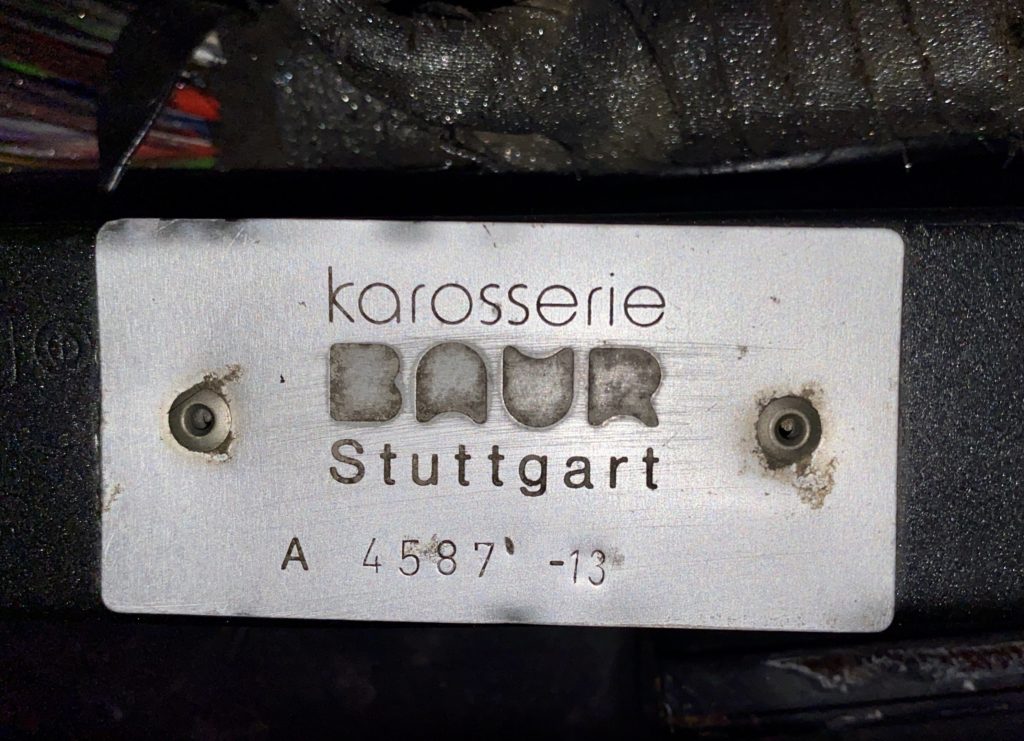
The official Baur badging found under the hood of my friend’s 1983 TC-1.
I have grown very fond of the Baur and its idiosyncrasies over the years. Admittedly, my affection for the wacky 3 Series wasn’t immediate. It wasn’t until my good friend Ian revealed to me that he had bought one that I started to become interested. I vividly remember him excitedly sending me a picture of the official Stuttgart nameplate on the fender, emblazoned with its 4587 production number—an exclusive badge that’s worn by only a handful of BMWs worldwide.
The previous owner had apparently claimed that this particular example was one of the 25 original North-American-spec Baurs imported by BMW from Germany to America, 22 of which were allegedly redirected to Canada. While the validity of this claim remains unverified and should be taken with a grain of salt, it is quite nice to think that I’ve been in the presence of what could very well be one of three E21 Baur TC 320i’s in the United States.
Regardless, the E21 Baur TC has and will continue to be one of my favorite vintage BMWs for years to come. Yes, it’s quirky and disproportionate, and looks like it may be a confused, unfinished convertible, but its unique personality, eccentric looks, and classic driving experience are what makes it worthy of its cabriolet legacy.—Malia Murphy
[Photos Courtesy Malia Murphy, Dyler, BMW AG]

